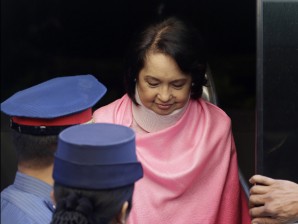What Went Before: EO 156 banning importation of used cars
MANILA, Philippines—Following a slump in the sales of new motor vehicles in the country, then President Gloria Macapagal-Arroyo issued Executive Order No. 156 on Dec. 12, 2002, banning the importation of used vehicles (except light trucks, buses and special-purpose vehicles).
While the order was meant to strengthen the local automotive industry and deter smuggling, three groups of vehicle importers questioned the validity of the executive order in the Olongapo Regional Trial Court, which later nullified portions of EO 156.
The Court of Appeals later upheld the decision, but in February 2006, the high tribunal allowed the importation of used vehicles only through the Subic Special Economic Zone.
In addition, the court ruled that the vehicles “may only be stored, used or traded, or exported out of Philippine territory, but [these] cannot be imported into the Philippines outside of the secured fenced-in former Subic Naval Base area.”
The vehicle importers filed motions for clarification and reconsideration, which the Supreme Court denied in August 2006.
Article continues after this advertisementA final ruling by the Supreme Court, issued on Oct. 30, 2007, denied the motion of the Motor Vehicles Importers Association of the Subic Bay Freeport to sell used cars outside the free port.
Article continues after this advertisementIn 2008, the American Chamber of Commerce noted in an internal draft report that the used-car import business at Port Irene in Santa Ana, Cagayan was “illegal and contrary” to EO 156.
The report said that the Cagayan Economic Zone had already imported 8,000 vehicles in 34 months, or an average of 225 a month, most of which were sold in the Philippines in violation of the executive order.
Defending the importation of used cars in his home province, Sen. Juan Ponce Enrile said that EO 156 was unconstitutional and that the Supreme Court was wrong in upholding it. He also denied allegations that Cagayan had become a smuggling haven.
Challenging Arroyo’s authority to issue the order, Enrile argued that only Congress could ban the importation of used items.
Following the controversy, the Automotive Rebuilding Industry of Cagayan (Aric) filed a petition assailing the constitutionality of the order in the Regional Trial Court in Aparri, which led to the issuance of a temporary restraining order on the implementation of EO 156.
In September 2010, the Aparri RTC ruled against an injunction appeal made by Aric, and affirmed the ban on the importation, registration and distribution of second-hand vehicles at Port Irene.
In 2011, a Court of Appeals ruling lifted the ban on car importation at the free port.
In a decision dated Jan. 7, 2013, the Supreme Court Second Division set aside the ruling of the Court of Appeals and reinstated the decision of the Aparri RTC.
“We found EO 156 a valid police-power measure addressing an ‘urgent national concern,’” the ruling said.—Inquirer Research
Source: Inquirer Archives
